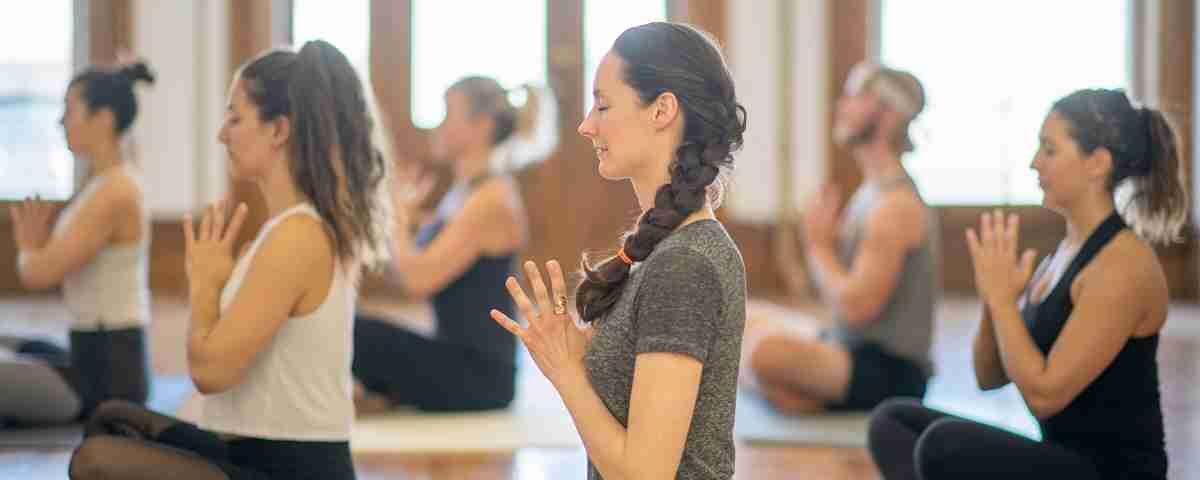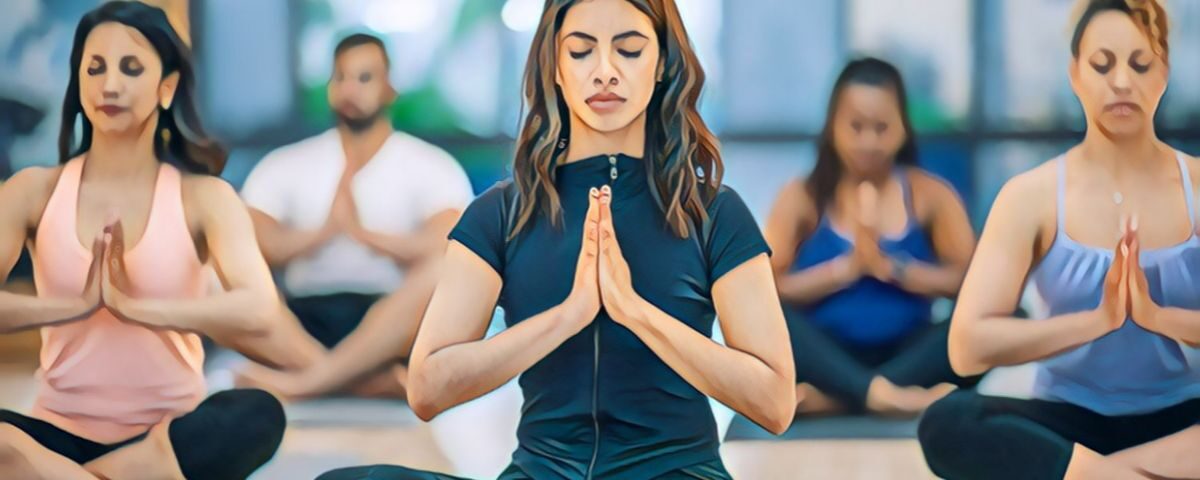
Sleeping Habits Of Students That Make A Massive Difference
October 14, 2023
How To Create An Exceptional Resume Format For Freshers That Gets You Noticed
October 28, 2023Yoga for Students to Build a Powerful, Clear Mind
You may often feel the weight of the world on your shoulders. Between juggling demanding coursework, extracurricular activities, and social obligations, it can be easy to neglect your mental and physical well-being. However, have you considered incorporating yoga into your routine? Yoga is a practice that involves a series of poses and breath work, aimed at promoting strength, flexibility, mindfulness, and relaxation. Not only is yoga for students a great way to improve your physical health, but it has also been shown to reduce stress, anxiety, and depression in students. Just incorporating a few minutes of yoga for students to improve their physical health can make a significant difference in how you feel both inside and out.
Benefits of Yoga for Students
Yoga offers a multitude of benefits for students, enhancing both their academic and personal lives. It is essential for students to integrate yoga into their daily routines to experience these benefits fully. By integrating yoga into their daily routines, students can experience improved concentration and focus, leading to better academic performance. Additionally, yoga helps alleviate stress and anxiety, promoting a sense of calm and relaxation. The practice also fosters self-awareness and self-acceptance, which are vital for personal growth and emotional well-being. Overall, the benefits of yoga for students are extensive, contributing to a healthier mind and body, and preparing them for the challenges of student life.
Relieves Stress & Anxiety
Ever noticed how your mind feels like a browser with 100 tabs open? Yoga helps you close those tabs, one by one. By practicing mindful breathing and gentle stretches, you train your body and mind to slow down. The importance of yoga for students lies in its ability to lower stress hormones, leaving you feeling lighter and more in control. Deep breathing exercises like Pranayama signal your brain to relax, reducing anxiety instantly.
Builds Mental Resilience
When stress piles up, your ability to cope takes a hit. Yoga helps students develop mental resilience by shifting their focus inward. Instead of drowning in worry, you learn to be present, handling challenges with a clear and steady mind. This not only improves academic performance but also enhances emotional well-being.
Improves Concentration
Ever found yourself rereading the same sentence multiple times without understanding a word? That’s a sign your mind is overloaded. Yoga helps clear mental clutter, allowing you to focus better on the task at hand. The importance of yoga for students lies in its ability to train the mind to stay present. By practicing specific asanas and breathing exercises, you enhance your attention span and reduce distractions. One of the key postures, Tree Pose, along with Eagle Pose, requires balance, forcing your mind to concentrate. Over time, this heightened focus spills over into your studies, helping you grasp concepts faster and retain information longer.
Develops Self-Awareness and Mental Clarity
Yoga is not just about physical flexibility; it’s also about understanding yourself better. When you take time to breathe deeply and move mindfully, you develop self-awareness, which in turn boosts confidence and self-acceptance. The best yoga for students includes meditation and mindfulness techniques that rewire your brain for better focus. A few minutes of deep breathing before studying can make all the difference. Try it, and see how your mind transforms into a powerhouse of clarity and concentration!
Enhances Social Skills
Have you ever hesitated before starting a conversation or felt nervous in a group setting? Yoga helps break down those barriers by reducing anxiety and promoting self-awareness. When you feel more at ease with yourself, interacting with others becomes effortless. The importance of yoga for students lies in its ability to cultivate empathy and mindfulness, which naturally improves the way you listen, respond, and engage with people. Group yoga sessions, partner poses, and breathing exercises encourage teamwork, helping students build stronger bonds with peers and teachers.
Encourages Positive Behavior and Emotional Balance
Yoga isn’t just about physical movement; it teaches patience, kindness, and emotional control. When practiced regularly, it helps students manage frustration, resolve conflicts peacefully, and even reduce bullying in schools. The best yoga for students includes poses like Warrior II and Bridge Pose, which promote confidence and inner strength. A calm mind leads to better interactions, and when you feel good inside, it shows in the way you connect with others. So, step onto the mat and let yoga shape you into a more confident, socially aware version of yourself!
Why Yoga is Important for Students

Balancing studies, assignments, and exams can feel overwhelming, but have you ever considered how yoga could give you an academic edge? It is crucial for students to incorporate yoga into their routines to manage stress and enhance focus. The benefits of yoga for students go beyond physical fitness—it sharpens your mind, boosts concentration, and helps you stay mentally alert. In today’s fast-paced world, distractions are everywhere, making it harder to focus. But with the right yoga practices, you can train your brain to absorb information more effectively and recall it when needed.
Academic Enhancement Through Yoga
A cluttered mind struggles to retain knowledge, but yoga helps clear the mental fog. Simple breathing exercises like pranayama improve oxygen flow to the brain, enhancing memory and cognitive function. The importance of yoga for students lies in its ability to calm nerves before exams, reduce anxiety, and create a sense of balance. Regular meditation and asanas like the Tree Pose or Lotus Pose increase mindfulness, allowing you to stay present while studying. Ever found yourself rereading the same line in a book? That’s where yoga helps—by improving attention span, making learning more efficient.
Boosting Self-Awareness for Academic Success
Academic success isn’t just about studying harder; it’s about studying smarter. Yoga teaches self-discipline, patience, and self-acceptance, helping you overcome self-doubt and stay motivated. The best yoga for students includes poses that promote relaxation and mental clarity, ensuring you perform at your best. With a peaceful mind and a sharper focus, you’ll not only excel in studies but also develop the confidence to tackle any challenge. So, why not give it a try?
Memory Boost
Yoga has been shown to improve memory and cognitive function in students. Regular practice of yoga asanas, meditation, and breathing exercises can help students to focus better and retain information more effectively. Some yoga asanas, such as Matsyasana (Fish Pose) and Padmasana (Lotus Pose), are particularly beneficial for improving memory power. These poses enhance blood flow to the brain, promoting mental clarity and sharpness. Additionally, yoga can help to reduce stress and anxiety, which can negatively impact memory and cognitive function. By incorporating these practices into your routine, you can create a more conducive environment for learning and memory retention.
Longer Attention Span
Yoga can help students to develop a longer attention span by improving their ability to focus and concentrate. Regular practice of yoga asanas, such as Vrikshasana (Tree Pose) and Tadasana (Mountain Pose), can help students to develop greater physical and mental balance, which can lead to improved attention and focus. These poses require you to maintain stability and mindfulness, training your brain to stay present. Additionally, yoga can help to reduce stress and anxiety, which can negatively impact attention and focus. By integrating these asanas into your daily routine, you can enhance your ability to concentrate on your studies and other tasks.
Best Asanas for Students

Starting your day off right is essential for success for students. But with so much to do and so little time, it can be hard to find the energy to get going. That’s where yoga comes in.
Energizing Yoga Poses for Students
Following Yoga for students is one of the best ways to boost your energy levels and get your mind and body ready for the day ahead.
Sun Salutations (Surya Namaskar): This flowing sequence combines asanas (poses), pranayama (breathing), and mantras (chants), invigorating your body and mind. Sun Salutations stretch and strengthen major muscle groups, improve blood circulation, and boost overall vitality. Start your yoga practice with this energizing sequence to kickstart your day with a sense of rejuvenation.
Tree Pose (Vrikshasana): This pose strengthens your legs and core, improves concentration, and enhances proprioception (awareness of body position). As you extend your arms overhead like branches, feel a sense of groundedness and growth, connecting with the nature within and around you.
Warrior Pose (Virabhadrasana): This powerful pose strengthens your legs, opens your hips, and builds endurance. Warrior II promotes grounding and confidence, allowing you to face challenges with resilience and grace. As you gaze beyond your front hand, feel a sense of determination and inner strength rising within you.
Yoga Poses for Stress Relief and Relaxation for Students
Stress is a part of life. But too much stress can take a toll on your physical and mental health. Yoga is a great way to relieve stress and relax the mind and body. There are many different yoga for students that can help them de-stress, but here are three of the best:
Child’s Pose (Balasana): This gentle pose promotes deep relaxation, releases tension in the back, shoulders, and hips, and calms the mind. To do Child’s Pose, kneel on the floor with your knees hip-width apart. Bring your forehead to the ground and extend your arms forward, resting your palms on the floor in front of you. Allow your body to relax and let go of any tension you’re holding on to.
Corpse Pose (Savasana): This pose encourages complete relaxation and serves as a powerful tool for stress reduction. To do Corpse Pose, lie flat on your back with your arms relaxed at your sides, palms facing up. Close your eyes and focus on your breath. Allow your body to sink into the ground and let go of any thoughts or worries.
Legs-Up-The-Wall Pose (Viparita Karani): This restorative pose promotes circulation, relieves tired legs, and calms the nervous system. To do the Legs-Up-The-Wall Pose, lie on your back with your legs extended vertically up against a wall. You can place a few pillows under your hips for support. Close your eyes and focus on your breath. Allow your body to relax and let go of any tension you’re holding on to.
Yoga Poses to Enhance Focus and Concentration for Students
Yoga is a great way to improve focus and concentration. You know that focus and concentration are essential for success. However, too much stress and screen time can make it difficult to stay focused. That’s where yoga for students comes in. Many different yoga poses can help, but this is the list of the best:
Eagle Pose (Garudasana): This balancing posture requires concentration and coordination as you wrap one leg around the other and cross your arms in front of your body. Eagle Pose strengthens your legs, improves balance, and enhances mental clarity. Experience a sense of poise and concentration as you embody the grace and strength of an eagle.
Camel Pose (Ustrasana): Open your heart and mind with Camel Pose. As you kneel and arch your back, this pose stretches the front of your body, releasing tension and stimulating the nervous system. Camel Pose promotes better breathing, improves posture, and enhances focus and concentration. Feel the uplifting energy flow through your body as you engage in this heart-opening pose.
Dolphin Pose (Ardha Pincha Mayurasana): Dive into a sea of focus and strength with Dolphin Pose. This pose, similar to a downward-facing dog, targets the upper body and core muscles. Dolphin Pose improves circulation to the brain, invigorates the body, and helps sharpen mental clarity. Embrace the stability and focus of a dolphin as you find balance and grounding in this empowering pose.
Pranayama Techniques for Students
Your mind is your most important tool. But with so much to learn and so much pressure to perform in college, it can be difficult to stay focused and relaxed. That’s where pranayama comes in.
Pranayama is a set of breathing exercises that can help you control your breath and improve your overall well-being. There are many different pranayama techniques, but following yoga for students is recommended at the beginning:
Nadi Shodhana (Alternate Nostril Breathing): This calming breathing technique involves inhaling and exhaling through alternate nostrils, promoting clarity of mind, reducing anxiety, and restoring energy. By regulating the breath, students can enhance their focus, concentration, and overall well-being.
Kapalabhati (Skull-Shining Breath): This invigorating breathwork technique involves forceful exhales and passive inhales. Kapalabhati helps cleanse the respiratory system, increase oxygen supply, and boost mental clarity. Incorporating this practice into your routine can improve vitality and revitalize the mind.
Bhramari (Bee Breath): This pranayama technique involves gently closing the ears and exhaling while making a humming sound. Brahmari promotes relaxation, reduces stress, and calms the nervous system. Brahmari cultivates inner peace and encourages a deep connection with oneself.
Incorporating Yoga into a Student's Routine

Adding yoga to your student routine opens the door to a plethora of health benefits! Don’t worry if finding time and motivation seems challenging at first. Start small with just a few minutes a day and gradually increase your practice. Find the perfect time slot that works for you! Plus, consider joining a yoga club or finding a fellow student to practice with for a supportive and uplifting environment. Get ready to experience reduced stress, improved focus, and enhanced physical well-being. Trust us, yoga is a valuable and exciting addition to your daily routine!
Getting Started with Yoga for Students
Starting yoga can feel overwhelming, but the truth is, you don’t need fancy equipment or years of experience to reap the benefits. The key is to begin with simple yoga asanas and breathing techniques that help you ease into the practice. Basic poses like Child’s Pose, Cat-Cow, and Downward Dog are great for improving flexibility while calming your mind. Pair these with deep breathing exercises like pranayama to reduce stress and boost focus. Even a few minutes a day can make a difference.
Make Yoga a Habit
Consistency is everything. Practicing yoga regularly, at least two to three times a week, can bring noticeable improvements in your concentration and energy levels. The importance of yoga for students isn’t just about physical fitness—it’s about creating a routine that supports both your mental and emotional well-being. Set aside a specific time in your schedule, whether it’s early in the morning to kickstart your day or in the evening to unwind.
Create the Right Environment
A quiet and comfortable space can enhance your yoga experience. Find a spot with minimal distractions where you can fully focus on your practice. Using yoga mats, cushions, or blocks can provide extra support, making postures more accessible. The best yoga for students is one that adapts to your individual needs, so don’t hesitate to modify poses as needed. Listen to your body, start slow, and enjoy the journey—your mind and body will thank you!
Making Yoga a Part of Your Daily Routine
Finding time for yoga as a student might seem tough, but the secret is to start small. Begin with just 10 to 15 minutes a day. That’s all it takes to feel a difference. A few simple stretches in the morning can wake up your body, while a short breathing exercise before bed can help you relax. The benefits of yoga for students go beyond flexibility—it sharpens your mind, improves focus, and helps you manage stress better.
Fit Yoga into Your Busy Schedule
You don’t need to set aside an extra hour in your already packed day. The best way to stay consistent is to blend yoga into your daily routine. Try doing a quick session before studying, between classes, or even during study breaks. A few rounds of Surya Namaskar in the morning can energize you, while gentle stretches before sleep can help you unwind. The importance of yoga for students isn’t about how long you practice—it’s about making it a habit.
Use Technology to Stay on Track
If you’re unsure where to start, yoga apps and online videos can be great guides. They provide step-by-step instructions and help you stay motivated. Finding the best yoga for students depends on your comfort level, so experiment with different styles until you discover what works for you. The more you practice, the more natural it becomes. Keep it simple, stay consistent, and soon, yoga will feel like second nature!
How Yoga Can Boost Your Academic Performance

Managing studies, assignments, and exams can be daunting, but yoga for students offers a real advantage. It enhances concentration, focus, and information retention. A calm mind reduces distractions, making learning easier. Regular practice boosts memory and extends attention span, aiding in better study retention. If focusing during lectures or revisions is challenging, simple breathing exercises and mindful movements keep you alert without exhaustion.
Beyond academics, yoga cultivates a positive mindset by reducing stress and frustration. It teaches patience and emotional control, useful for handling deadlines and challenges. The benefits of yoga for students extend beyond personal growth, fostering a peaceful and respectful school environment. Yoga practitioners often develop self-awareness, leading to positive behavior and improved peer relationships, reducing negativity and conflicts.
The importance of yoga for students isn’t just about grades; it’s about mental clarity, emotional balance, and well-being. Feeling good enhances performance. The best yoga for students includes poses like Tree Pose for focus, Child’s Pose for relaxation, and Pranayama for calming the mind. Consistency is crucial. Just a few minutes of daily yoga can transform your academic experience, making learning smoother and life less stressful.
Final Words for Educational Institutions

Teaching Yoga in Education
Teaching yoga in education can have a positive impact on students’ physical, emotional, and mental well-being. Yoga can help students to develop greater self-awareness, self-regulation, and self-motivation, which can lead to improved academic performance and overall well-being. By incorporating yoga into the school curriculum, educators can provide students with valuable tools to manage stress, enhance focus, and build resilience. The benefits of yoga for students extend beyond the classroom, fostering a holistic approach to education that nurtures both the mind and body.
How to Teach Yoga to Children in Schools
Teaching yoga to children in schools requires a gentle and playful approach. Teachers can start by introducing simple yoga asanas and breathing exercises, and gradually build up to more complex practices. It’s essential to create a safe and supportive environment, where students feel comfortable and encouraged to participate. Teachers can also use props, such as blocks and straps, to help students modify poses and make them more accessible. Incorporating games, stories, and music can make the sessions more engaging and enjoyable for young students, fostering a positive association with yoga.
Yoga Programs and Lesson Plans for Schools
Developing yoga programs and lesson plans for schools requires careful consideration of the students’ needs and abilities. Teachers can start by identifying the goals and objectives of the yoga program, and then develop lesson plans that align with those goals. It’s essential to include a variety of yoga asanas, breathing exercises, and meditation techniques to keep students engaged and interested. Teachers can also incorporate themes and stories into the lesson plans to make them more engaging and fun. By creating a well-rounded yoga program, educators can ensure that students receive the full benefits of yoga, enhancing their physical, emotional, and mental well-being.




